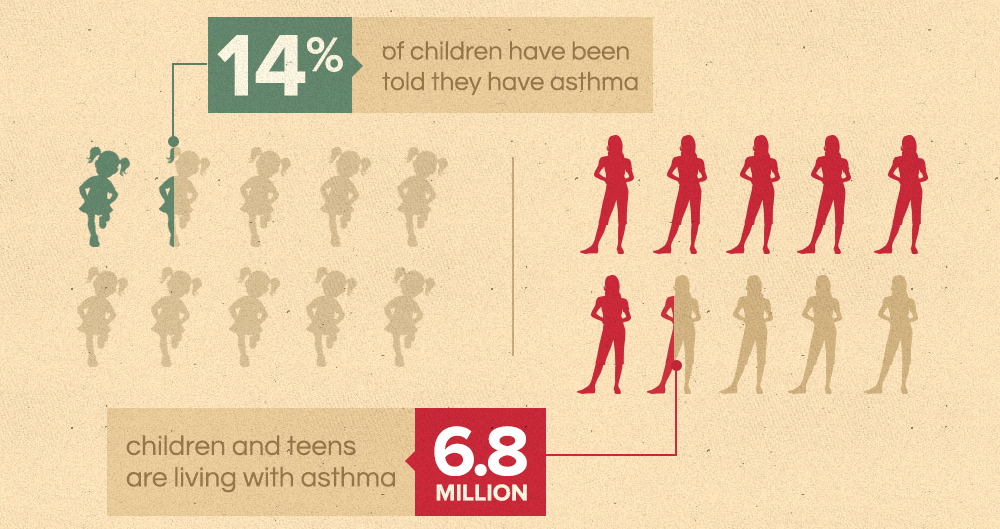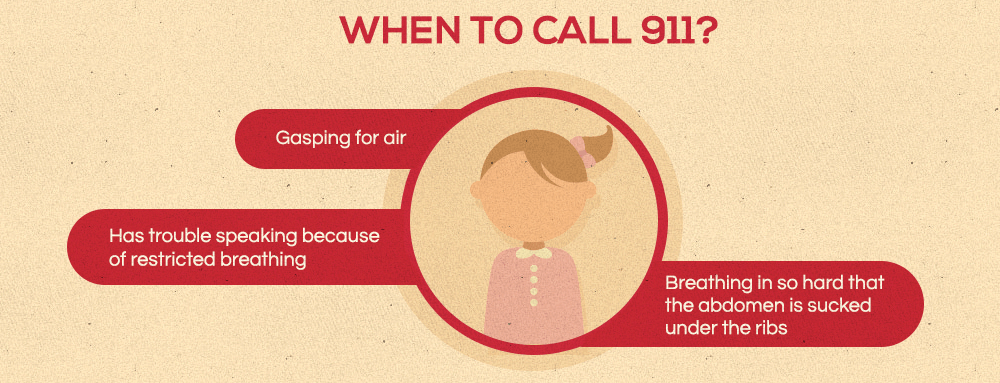Parent's Guide to Childhood Asthma: Symptoms & Treatments
Asthma affects nearly 7 million children in the United States and yet many parents are either misinformed or uneducated about the condition.
According to the American Lung Association, asthma is one of the leading chronic childhood disorders which is mostly triggered by allergens, respiratory infections, and inhaled irritants. This disease causes breathing complications which can be very serious – if not life-threatening – especially for children.
While asthma can’t be cured, its symptoms can be managed. We created this infographic to help parents everywhere understand how to recognize and control asthma symptoms within their children. Increase your awareness of the disease, identify common triggers, and find out how to prevent asthma attacks all in an easy, step-by-step guide.
Asthma is more common in the United States than you might think

Approximately 14% of children have been diagnosed with asthma, which roughly translates to 1 to 2 out of every 10 kids. The problem is that this adds up to the already large number of teens and children currently living with asthma, which is at around 6.8 million.
Health concerns with asthma

In 2010 alone, around 640,000 Emergency Room visits were by children complaining of asthma-related problems. This disease has also caused around 10.5 million school days each year to be missed. If left unattended, it can cause death.
5 Steps to take action against your child's asthma
1. Increase your asthma awareness.

Three things happen in asthma: the airways become narrow, they start to swell, and extra mucus is produced. All of these result to difficulty in breathing, as characterized by shortness of breath, wheezing, and coughing.

The symptoms vary from one person to another, with some people experiencing more asthma attacks than others. Generally, males are more at risk for asthma than females, as are those who suffer from respiratory infections, have allergies, or have family members diagnosed with this condition. Additionally, living in an environment that is polluted or have plenty of allergens also increases the risk for acquiring asthma.
2. Know the triggers and how to avoid them.
What magnifies asthma symptoms?

Allergens like dust or pollen can trigger asthma symptoms to pop up, as can pollution and cigarette smoke. Getting an upper respiratory infection also increases the likelihood of an asthma attack.

Strenuous physical activities such as exercise can magnify asthma symptoms. Uncontrolled emotions like crying and yelling are also considered asthma triggers, as is cold weather.
3. Manage asthma symptoms.
What asthma medications do doctors prescribe?

Quick relief, sometimes called "rescue", medications are administered as necessary for fast and short-term relief from symptoms that pop up during asthma attacks. There are several types of quick relief medications ranging from the more common inhalers, to oral and intravenous corticosteroids. Doctors may sometimes even recommend these types of medication before doing exercise.

Controlling asthma in the long term generally necessitates a daily intake of medication. These medications keep a day-to-day tab on asthma, keeping it under control, and thereby making an asthma attack less likely to occur. Such medications can also come in oral, intravenous, and inhaled forms.

When a person starts gasping for air, cannot respond to questions because of restricted breathing, and has his or her abdomen sucked under the ribs by breathing in so hard, it's time to call 911. People with asthma should always carry their emergency medications with them, but when even these fail to alleviate the symptoms of an attack, emergency services need to be called in.
4. Prevent asthma attacks.
Reduce your child’s exposure to allergy triggers at all times.
| Prevention at Home | |
|---|---|
Avoid mold growth
| Minimize Dust
|
Avoid pollen
| Reduce pet dander
|
Eliminate smoking
| Prevent illness
|
| Prevention Outdoors | Prevention at School |
|---|---|
|
|
5. Help your child stay healthy.

Asthma is incurable, but it can be managed. Aside from monitoring asthma symptoms, parents of children with asthma need to have an Asthma Action Plan that is accessible for everyone in the family. Parents also need to ensure that the asthmatic child maintains a healthy weight, and get sufficient exercise that's recommended by the doctor.
View the complete infographic here.
Embed infographic
Featured Products
12x24x1 Air Filters
14x18x1 Air Filters
20x25x2 Air Filters
16x25x4 Air Filters

.webp)
.webp)
.webp)
.webp)




